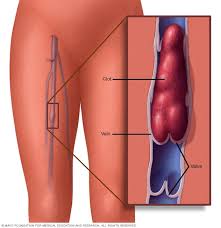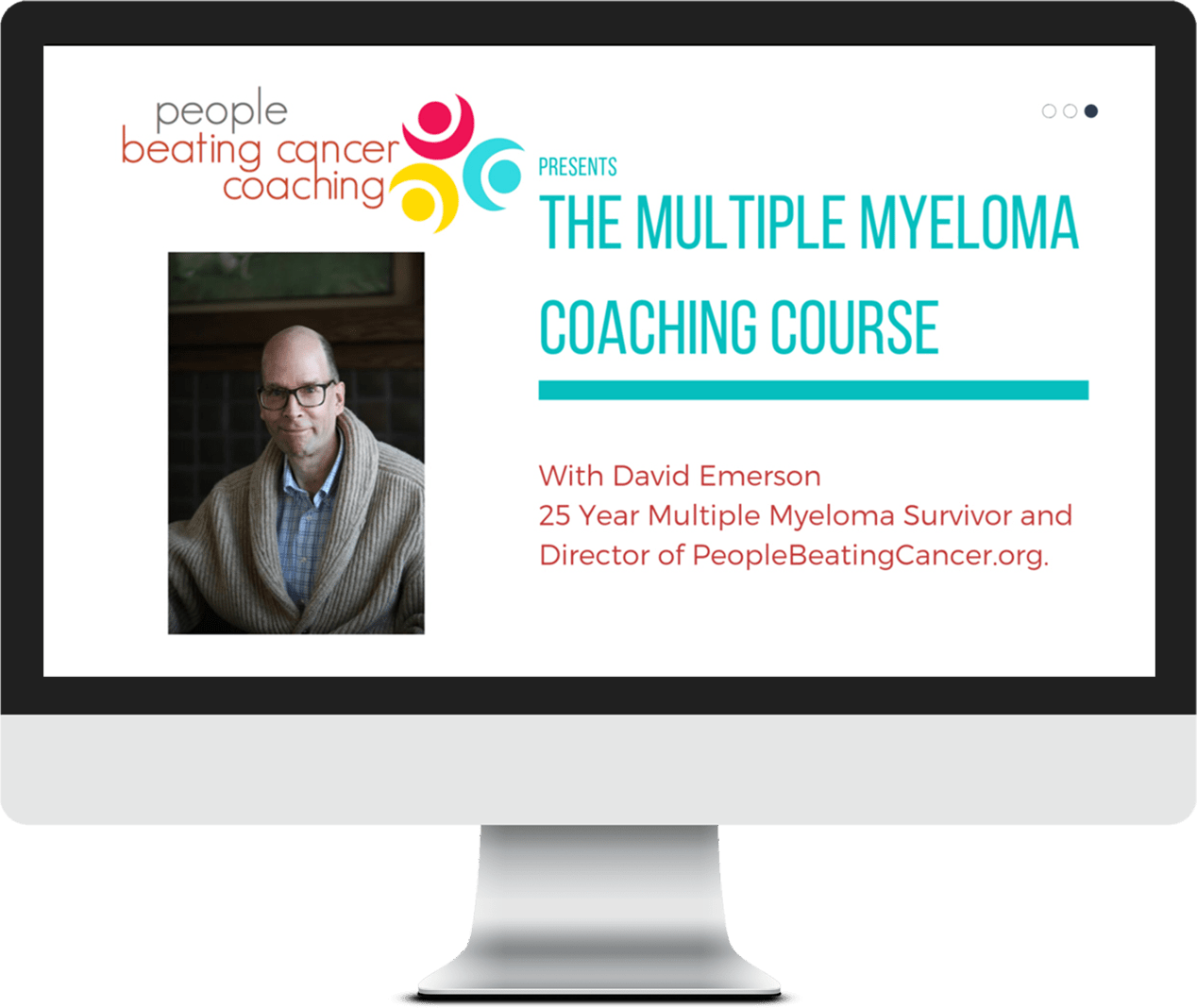“More than one-third of patients with DVT will develop PTS, and 5% to 10% of patients will develop severe PTS, which may manifest as venous ulceration…”
I was diagnosed with multiple myeloma in 2/94. I began my induction therapy, VAD, in 3/95. I developed a side effect called deep-vein thrombosis (DVT) aka blood clot about three weeks later. I didn’t know it the time, but my DVT turned into Postthrombotic syndrome or PTS.
I later learned that DVT/VTE in MM pateints is common both as a symptom and as a side effect of chemotherapy. So common that blood clots are one of the top five leading causes of death for MM patients. Long story short, I developed a side effect from my multiple myeloma side effect. A sort of medical insult to injury?
As you can read from the first article linked and exerpted below, Postthrombotic syndrome is a serious side effect of DVT…
After your deep vein thrombosis has been diagnosed and treated, consider natural blood thinners.
Wait…let me take a step back. I am assuming you’re reading this because you have had a MM side effect called deep vein thrombosis (DVT-blood clot). While your initial focus on your blood clot has faded your clot may not. At least it may not resolve itself completely. My second clot didn’t.

Now I live an anti-blood clot lifestyle. More to the point, because I have MM side effect called postthrombotic syndrome (PTS), I am continually aware of the dangers of another blood clot and therefore I live an anti-blood clot lifestyle.
To complicate this issue, I have chronic atrial fibrillation aka a-fib. AF can cause blood clots as well.
I don’t take any conventional blood thinners like coumadin or Xarelto. I took coumadin years ago and learned about the short and long-term side effects. So conventional blood thinners are not for me.
To be honest, the foods and supplements listed below is good advice, nutritionally speaking. I mean, stay hydrated. Or eat lots of green, leafy veggies. And my favorite “sip red wine.” Like I said, good nutritional advice.
If you take a blood thinning drug, please discuss the non-toxic therapies listed below with your doctor. Too much of a good thing, ya know?
Do you or did you have a blood clot? Do you suffer from postthrombotic syndrome? Scroll down the page, post a question or comment and I will reply to you ASAP.
Learn More About Blood Clots aka Deep Vein Thromboses- click now
Thank you.
David Emerson
- Multiple Myeloma Survivor
- MM Cancer Coach
- Director PeopleBeatingCancer
Recommended Reading:
“Postthrombotic syndrome (PTS) is a chronic complication of deep venous thrombosis (DVT) that reduces quality of life and has important socioeconomic consequences. More than one-third of patients with DVT will develop PTS, and 5% to 10% of patients will develop severe PTS, which may manifest as venous ulceration. The principal risk factors for PTS are persistent leg symptoms 1 month after the acute episode of DVT, extensive DVT, recurrent ipsilateral DVT, obesity, and older age…”
“Natural blood thinners are substances that reduce the blood’s ability to form clots. Blood clotting is a necessary process, but sometimes the blood can clot too much, leading to complications that can be potentially dangerous.
People who have certain medical conditions, such as congenital heart defects, may require blood-thinning medications to reduce their risk of heart attack or stroke.
It is essential to speak with a doctor before trying these remedies, as they may not work as well as medication and may interfere with some prescription drugs.
Some foods and other substances that may act as natural blood thinners and help reduce the risk of clots include the following list:
- Turmeric
- Ginger
- Cayenne peppers
- Vitamin E
- Garlic
- Cassia cinnamon
- Ginkgo biloba
- Grape seed extract
- Dong quai
- Feverfew
- Bromelain
Takeaway- Many natural substances may reduce clotting to some degree. But natural remedies are unlikely to be as effective as blood-thinning drugs and people at risk of blood clots should not use them instead of prescription medications.
Government authorities do not monitor herbs and supplements as closely as food and drugs. People should research the different brands carefully before buying to ensure they are known for quality and purity.
People taking prescription blood thinners should not use natural remedies without talking to their doctor first.
Even though they are natural, some substances and foods may thin the blood too much, especially when taken in conjunction with medications. This can increase the risk of bleeding.
While people can usually consume foods with potential blood-thinning properties safely in reasonable amounts, it is essential to speak to a doctor before trying herbal remedies, such as dong quai and grape seed extract.”
“Certain Food and Drink Choices Lower Risk of Blood Clots
Because we all have blood pumping through our veins, everyone is at some risk for deep vein thrombosis (DVT), a condition in which blood clots form in veins deep inside the body. The bad news: DVT can lead to serious illness, disability, or, in severe cases, death. The good news: DVT is both preventable and treatable. One step you can take right now is changing your diet to prevent DVT. “Some foods do increase the risk for blood clots,” said Steven Masley, MD, clinical assistant professor at the University of South Florida and author of The 30-Day Heart Tune Up. On the flip side, Dr. Masley said you can add certain foods to your diet to prevent DVT and decrease risk for blood clots…
- Drink Plenty of Water
- Sip Red Wine or Grape Juice
- Go for Garlic
- Enjoy Virgin Olive Oil
- Eat a Kiwi
- Make Leafy Greens a Routine
- Limit Animal Fats in Your Diet
Finally, Masley said that the same foods that are bad for cardiovascular health in general can also increase your risk of developing blood clots. That means you want to stay away from unhealthy trans fats, from the saturated fats in full-fat dairy and fatty meats, and from all types of sugar. “These are all foods that increase inflammation,” he said. Read labels because many of the culprits may not be obvious ingredients in packaged foods.”




